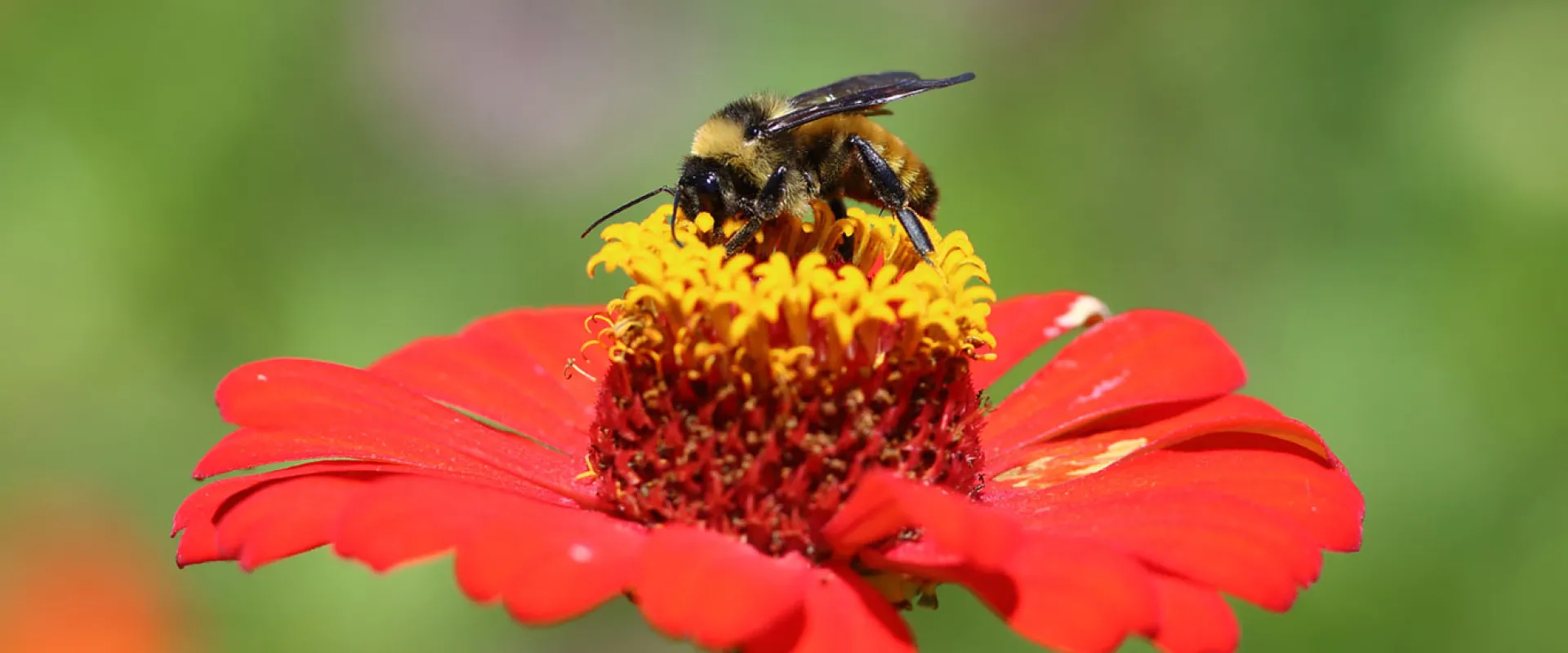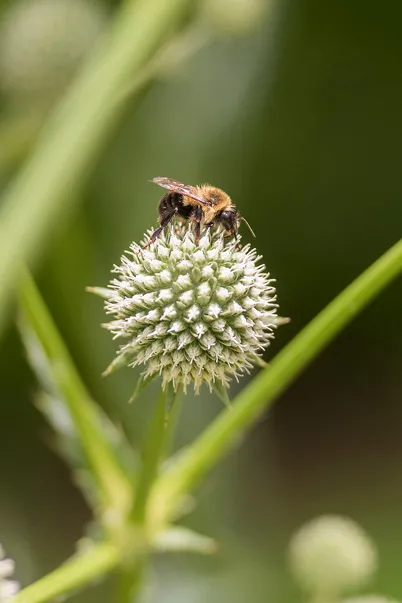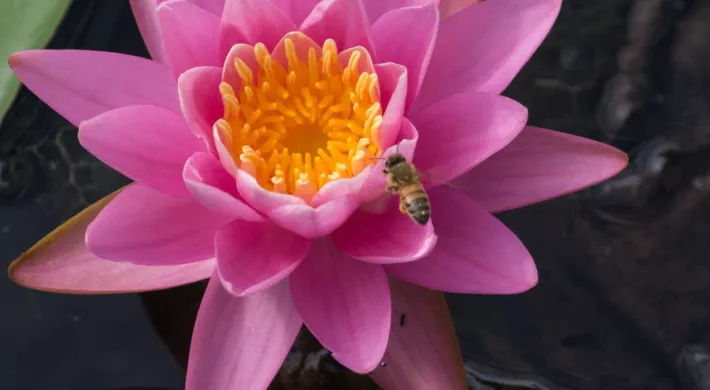Did you know honey bees use their wings to fan drops of water on the hive floor to air condition their home? Learn more about honey bees.
The honey bee hive allows guests to observe a bee hive and learn about their behaviors while seeing them in a safe, natural setting. The bees use native plants throughout the Zoo to gather nectar and pollen. The Zoo has also planted some bee-friendly plants in the area.
Insect populations are declining across the world. One iconic species that have suffered steep declines in recent decades is the monarch butterfly. One of the reasons for these declines is a lack of food and shelter during their annual journey between the northern United States and Mexico. To support migratory monarchs during their annual migration, the North Carolina Zoo has set up several Monarch Waystations. The Zoo’s Waystations were carefully planned to support the monarchs through all their life stages. The Zoo is currently experimenting with different plant mixes to better understand which plants are most liked by the monarchs, as well as other pollinating insects visiting the Zoo grounds. You can read more about the Zoo’s work on wild pollinators below, under related resources.
- Honey bees live in hives and each bee has a job.
- A hive has only one queen bee. Her job is to lay eggs.
- All worker bees are female. Male honey bees are called drones.
- Their barbed stinger remains in the animal or person stung, so that the bee can only sting once and then dies.
Honey Bee Garden
The Honey Bee display hive is closed for the season and will reopen in the Spring.
- Least Concern (LC)






